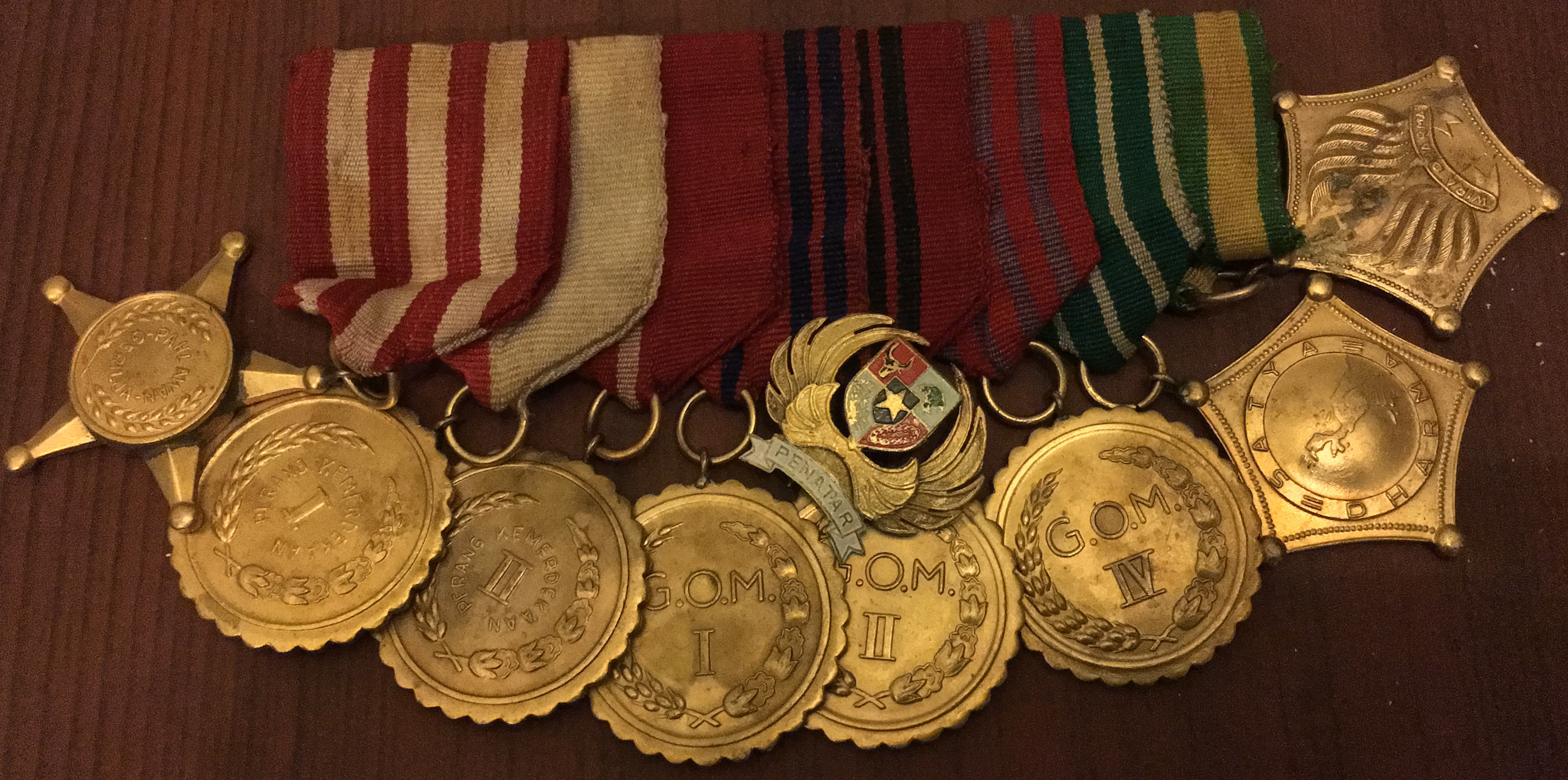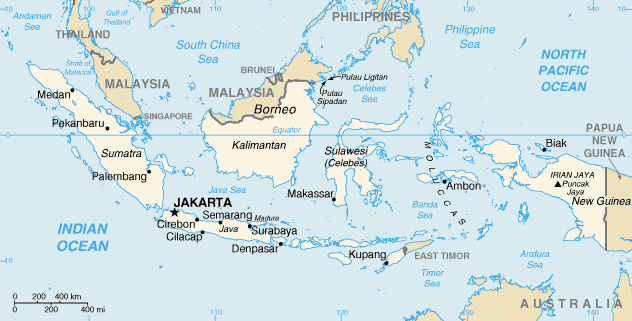|
National Hero Of Indonesia
National Hero of Indonesia ( id, Pahlawan Nasional Indonesia) is the highest-level title awarded in Indonesia. It is posthumously given by the Government of Indonesia for actions which are deemed to be heroic, defined as "actual deeds which can be remembered and exemplified for all time by other citizens" or "extraordinary service furthering the interests of the state and people". The Ministry of Social Affairs gives seven criteria which an individual must fulfill, as follows: #Have been an Indonesian citizen who is deceased and, during his lifetime, led an armed struggle or produced a concept or product useful to the state; #Have continued the struggle throughout his life and performed above and beyond the call of duty; #Have had a wide-reaching impact through his actions; #Have shown a high degree of nationalism; #Have been of good moral standing and respectable character; #Never surrendered to his enemies; and #Never committed an act which taints his or her legacy. Nominations ... [...More Info...] [...Related Items...] OR: [Wikipedia] [Google] [Baidu] |
Orders, Decorations, And Medals Of Indonesia
Awards and decorations of the Republic of Indonesia are both military and civilian awards for service and personal contributions to the Republic of Indonesia. According to the Constitution of Indonesia, Chapter III Article 15: ''"The President grants titles, decorations and other honors as regulated by Law"''. Refer to Law no. 20/2009, there are three types of awards; the title of National Hero of Indonesia, Mark of Service () and Mark of Prestige (). Mark of Service consist of (pentagon-shaped decoration medal), while Mark of Prestige consists of Stars of the Republic of Indonesia (star-shaped decoration medal), ''Satyalancana'' (round-shaped decoration medal), and ''Samkaryanugraha'' (distinction trophy). All of the awards and decorations of the Republic of Indonesia are awarded to individuals of Indonesian citizenship and may be awarded to foreign nationals, except for the ''Samkaryanugraha'' which is awarded to institutions or organizations. Names of the awards and decoratio ... [...More Info...] [...Related Items...] OR: [Wikipedia] [Google] [Baidu] |
Indonesian Archipelago
The islands of Indonesia, also known as the Indonesian Archipelago ( id, Kepulauan Indonesia) or Nusantara, may refer either to the islands comprising the country of Indonesia or to the geographical groups which include its islands. History The exact number of islands comprising Indonesia varies among definitions and sources. According to the Law No 9/1996 on Maritime Territory of Indonesia, of 17,508 officially listed islands within the territory of the Republic of Indonesia. According to a geospatial survey conducted between 2007 and 2010 by the National Coordinating Agency for Survey and Mapping (Bakorsurtanal), Indonesia has 13,466 islands. However, according to earlier survey in 2002 by National Institute of Aeronautics and Space (LAPAN), the Indonesian archipelago has 18,307 islands, and according to the CIA ''World Factbook'', there are 17,508 islands. The discrepancy of the numbers of Indonesian islands was because that the earlier surveys include "tidal islands"; s ... [...More Info...] [...Related Items...] OR: [Wikipedia] [Google] [Baidu] |
Ak Gani
AK and A.K. (but not Ak) may refer to: Arts and entertainment * ''A.K.'' (film), a 1985 film directed by Chris Marker * AK (radio program), a weekly program produced by Alaska Public Radio Network from 2003 to 2008, later a segment on ''Alaska News Nightly'' * AK (rapper), also known as AK the Razorman, American rapper from Atlanta, Georgia, member of hip hop group P$C * AK-47 (rapper), American rapper from Chicago, Illinois, member of hip hop group Do or Die * AK the Savior, American rapper from Brooklyn, New York, member of The Underachievers * ''Arknights'', the Chinese mobile game developed by Hypergryph Businesses and organizations * AK Press, a collectively owned and operated independent publisher and book distributor that specializes in radical and anarchist literature * AK Steel Holding Company, a US-based S&P 500 (NYSE:AKS) Steel Manufacturer * ''Adalet ve Kalkınma Partisi'', the Turkish Justice and Development Party * ''Arbeiterkammer'', the Austrian Chamber of Labo ... [...More Info...] [...Related Items...] OR: [Wikipedia] [Google] [Baidu] |
Indonesian Language
Indonesian ( ) is the official language, official and national language of Indonesia. It is a standard language, standardized variety (linguistics), variety of Malay language, Malay, an Austronesian languages, Austronesian language that has been used as a lingua franca in the multilingual Indonesian archipelago for centuries. Indonesia is the fourth most list of countries by population, populous nation in the world, with over 270 million inhabitants—of which the majority speak Indonesian, which makes it one of the most List of languages by total number of speakers, widely spoken languages in the world.James Neil Sneddon. ''The Indonesian Language: Its History and Role in Modern Society''. UNSW Press, 2004. Most Indonesians, aside from speaking the national language, are fluent in at least one of the more than 700 indigenous languages of Indonesia, local languages; examples include Javanese language, Javanese and Sundanese language, Sundanese, which are commonly used at home a ... [...More Info...] [...Related Items...] OR: [Wikipedia] [Google] [Baidu] |
Enhanced Indonesian Spelling System
The Enhanced Spelling of the Indonesian Language ( id, Ejaan Bahasa Indonesia yang Disempurnakan, EYD) is the spelling system used for the Indonesian language. History The Enhanced Spelling of the Indonesian Language ( id, Ejaan Bahasa Indonesia yang Disempurnakan, EYD) is the spelling system used for the Indonesian language. The system is an orthography released in 1972 to replace the Republican Spelling System (''RSS'', also called the Soewandi Spelling System, ''SSS''). A joint initiative of Indonesia and neighboring country Malaysia (which also introduced the similar Joint Rumi Spelling system), the aim of the change in 1972 was to introduce greater harmonization of the Indonesian and Malay-language orthographies. The adoption of the new EYD system, to begin on the 27th anniversary of Indonesia's independence on 17 August 1972, was decreed by President Suharto on the previous day. Government departments were instructed to begin using the EYD system on 1 January 1973. O ... [...More Info...] [...Related Items...] OR: [Wikipedia] [Google] [Baidu] |
Indo People
The Indo people ( nl, Indische Nederlanders, or Indos) are Eurasian people living in or connected with Indonesia. In its narrowest sense, the term refers to people in the former Dutch East Indies who held European legal status but were of mixed Dutch and indigenous Indonesian descent as well as their descendants today. In the broadest sense, an Indo is anyone of mixed European and Indonesian descent. Indos are associated with colonial culture of the former Dutch East Indies, a Dutch colony in Southeast Asia and a predecessor to modern Indonesia after its proclamation of independence shortly after World War II. The term was used to describe people acknowledged to be of mixed Dutch and Indonesian descent, or it was a term used in the Dutch East Indies to apply to Europeans who had partial Asian ancestry. "Indos–people of Dutch descent who stayed in the new republic Indonesia after it gained independence, or who emigrated to Indonesia after 1949–are called 'Dutch-Indones ... [...More Info...] [...Related Items...] OR: [Wikipedia] [Google] [Baidu] |
Arab Indonesians
Arab Indonesians ( ar, عربٌ إندونيسيون) or ''Hadharem'' (; sing., ''Hadhrami'', ), informally known as Jama'ah, and until the 20th century known as Codjas or Kodjas, note the work was also published in the Hague and Utrecht simultaneously by others. are Indonesian citizens of mixed Arab – mainly Hadhrami – and Indonesian descent. The group also includes those of Arab descent from other Middle Eastern Arabic speaking nations. Restricted under Dutch East Indies law until 1919, the community elites later gained economic power through real estate investment and trading. Currently found mainly in Java, especially West Java and South Sumatra, they are almost all Muslims. The official number of Arab and part Arab descent in Indonesia was recorded since 19th century. The census of 1870 recorded a total of 12,412 Arab Indonesians (7,495 living in Java and Madura and the rest in other islands). By 1900, the total number of Arabs citizens increased to 27,399, then 44,902 ... [...More Info...] [...Related Items...] OR: [Wikipedia] [Google] [Baidu] |
Chinese Indonesians
Chinese Indonesians ( id, Orang Tionghoa Indonesia) and colloquially Chindo or just Tionghoa are Indonesians whose ancestors arrived from China at some stage in the last eight centuries. Chinese people and their Indonesian descendants have lived in the Indonesian archipelago since at least the 13th century. Many came initially as sojourners (temporary residents), intending to return home in their old age. Some, however, stayed in the region as economic migrants. Their population grew rapidly during the colonial period when workers were contracted from their home provinces in Southern China. Discrimination against Chinese Indonesians has occurred since the start of Dutch colonialism in the region, although government policies implemented since 1998 have attempted to redress this. Resentment of ethnic Chinese economic aptitude grew in the 1950s as Native Indonesian merchants felt they could not remain competitive. In some cases, government action propagated the stereotype that e ... [...More Info...] [...Related Items...] OR: [Wikipedia] [Google] [Baidu] |
Native Indonesians
Native Indonesians, also known as ''Pribumi'' (), are Indonesians whose ancestral roots lie mainly in the archipelago, distinguished from Indonesians of known (partial) foreign descent, like Chinese Indonesians (Tionghoa), Arab Indonesians, Indian Indonesians and Indo-Europeans (Eurasians). Etymology and historical context The term was popularized after Indonesian independence as a respectful replacement for the Dutch colonial term (normally translated as "native" and seen as derogatory). It derives from Sanskrit terms ''pri'' (before) and ''bhumi'' (earth). Before independence the term (Malay: son of the soil) was more commonly used as an equivalent term to ''pribumi''. Following independence, the term was normally used to distinguish indigenous Indonesians from citizens of foreign descent (especially Chinese Indonesians). Common usage distinguished between ''pribumi'' and ''non-pribumi''. Although the term is sometimes translated as "indigenous", it has a broader meaning ... [...More Info...] [...Related Items...] OR: [Wikipedia] [Google] [Baidu] |






_en_Tek_Hwa_Seng_bij_Poeloe_Samboe_TMnr_10010680.jpg)
